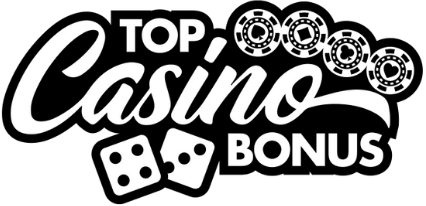How to execute a semi-bluff in poker effectively
Every poker player worth his salt wrestles with the concept of the semi-bluff. To the untrained eye, it looks like smoke and mirrors, a reckless leap in the dark. But in the hands of an experienced grinder, it’s a surgical tool, executed at the perfect moment with precision and purpose. Let’s not mince words: most players misuse it. Too aggressive, too early, or just flat-out timing it wrong. This guide sets the record straight.
Table of contents
Understanding the semi-bluff’s true nature
The semi-bluff isn’t just a wild swing hoping to spook the table. No, it’s got teeth. A semi-bluff involves betting or raising with a hand that’s likely behind now but has decent equity to improve. Think of that flush draw on the turn or an open-ended straight on the flop. You’re not operating in fantasy; you’ve got outs in your back pocket, and you’re forcing your opponent to answer a tough question.
Spotting the real opportunity
Novices make the mistake of bluffing into calling stations or firing when the board screams danger. Wrong spots. The best semi-bluffs come when your hand has legitimate draw potential, and the board texture supports a believable story. Don’t represent the straight on a dry rainbow flop. It’s not just about your cards; you’ve got to sell the narrative, clean and convincing.
Balancing fold equity and pot equity
Here’s where too many players lose the plot. A real semi-bluff thrives on two fronts: fold equity, your chance to take down the pot uncontested, and pot equity, the percentage chance you’ll hit your draw if called. You’ve got to weigh both, not one or the other. I’ve watched folks bet big on a gutshot with zero fold equity. What’s that? A busted lottery ticket, not a semi-bluff.
Measuring equity like a craftsman
It ain’t guesswork. You can count your outs and calculate your odds. A four-card flush draw gives you 9 outs; an open-ender gives you 8. Multiply by 2 on the turn, or 4 on the flop, and bingo, there’s your rough equity percentage. If fold equity is above, say, 30% and pot odds are favorable, that’s your green light. Ignore this and you’re swinging blindfolded.
Choosing your moment with table dynamics in mind
I’ve lost count of how many hands I’ve seen wasted by hot-headed aggression oblivious to the table’s pulse. Timing is everything. A semi-bluff is art, not autopilot. You need the right target, someone who’s shown they can lay it down. And the right image, if you’ve been wild all night, forget it. No one’s folding to your theatrics. But if you’ve played solid, controlled poker? That’s when the semi-bluff bites hard.
Stack sizes and pressure points
Here comes a subtlety newer players miss: stack sizes. If your opponent has too little behind, they’re priced in to call. If they’ve got deep stacks, they may test your resolve with a re-raise. The sweet spot is where your bet puts meaningful pressure without over-committing yourself. Two-thirds pot is often the golden ratio in these spots. Just enough pain without bleeding chips.
Multi-street planning: not all semi-bluffs are one-shot
Too many folks think they’ve got one chance to bluff, bet, cross fingers, and hope. That’s a rookie mistake. Real operators think in arcs, not snapshots. You might check-raise the flop representing top pair, then barrel turn to rep a made straight. Your draw’s maturing, but even if it doesn’t hit, you’ve engineered enough heat to choke middle pair off the river. That’s long-game bluffing and it wins pots others never even see.
Mixing it up to stay unpredictable
If they catch on that you only semi-bluff on strong draws? You’re toast. So you sprinkle your lines with occasional airballs. Semi-bluffs with weaker draws, say a backdoor flush, or the odd no-draw bluff on a scare card. Keeps them second-guessing. The day you become predictable, your edge goes up in smoke. Rein in your patterns or wear a sign that says, “Bluff coming.”
Technical execution and mental discipline
Now let’s get to the nuts and bolts. Your bet sizing needs polish. Overbet on the wrong board and it screams desperation. Underbet, and you invite peeling with trash. You want disciplined aggression, enough pressure that even decent hands think twice. And when it all goes wrong, and they call with top pair? Let it go. Semi-bluffs, even masterful ones, don’t hit every time. Control your tilt or your next hand’s done before it starts.
Long-term credibility and payment systems in online play
In today’s online arenas, your image builds over hundreds of hands. Play it tight, execute well-timed semi-bluffs, and you’ll get paid off later when you hit big. Consistency is currency. Speaking of which, smooth bankroll management is key. Using trusted methods like PayPal or Mastercard ensures fast, safe deposits so you can stay locked in, not sweating withdrawals.
Prefer mobile play? Pay by phone casinos keep your session clean and bankroll separate. For digital natives, Neteller remains a powerhouse with blazing-fast transfer times and strong player protections. Whatever tool you use, make sure your payments don’t distract from the cards.
Applying semi-bluffs across different card games
Mastering semi-bluffs isn’t boxed into No-Limit Hold’em alone. The principle holds water across many variants. In rummy-based games, for instance, semi-aggressive draw manipulation mimics the semi-bluffing ethos. Timing, opponent analysis, and leveraging equity all play a part. If that interests you, check out this guide on understanding rummy card games for money, it’s a side road worth exploring.
Parting thoughts: earning every chip through respect and edge
Players these days want shortcuts. A push-button strategy, a YouTube hack, a plug-and-play mindset. But semi-bluffing isn’t a slot machine. It’s a blade you sharpen over countless hands, knowing when to press and when to retreat. Done right, it bends the table to your will. Done wrong, it bleeds your stack dry.
Never forget: chips are earned, not handed out. The semi-bluff remains one of poker’s most elegant weapons, but only in the hands of someone who respects its risk and reveres its reward.





0 Comments